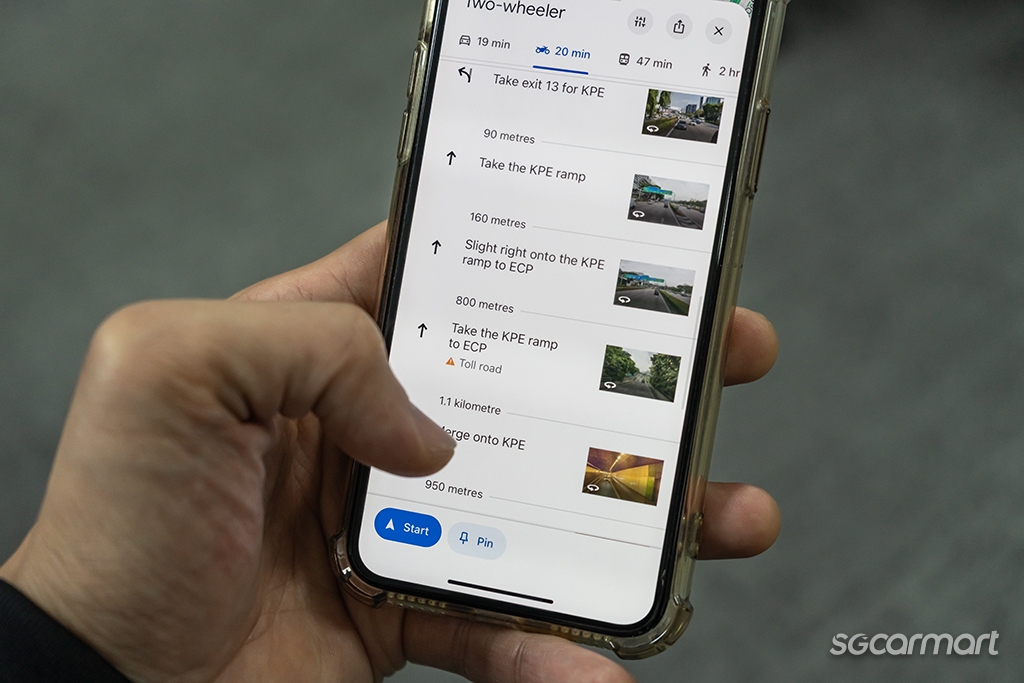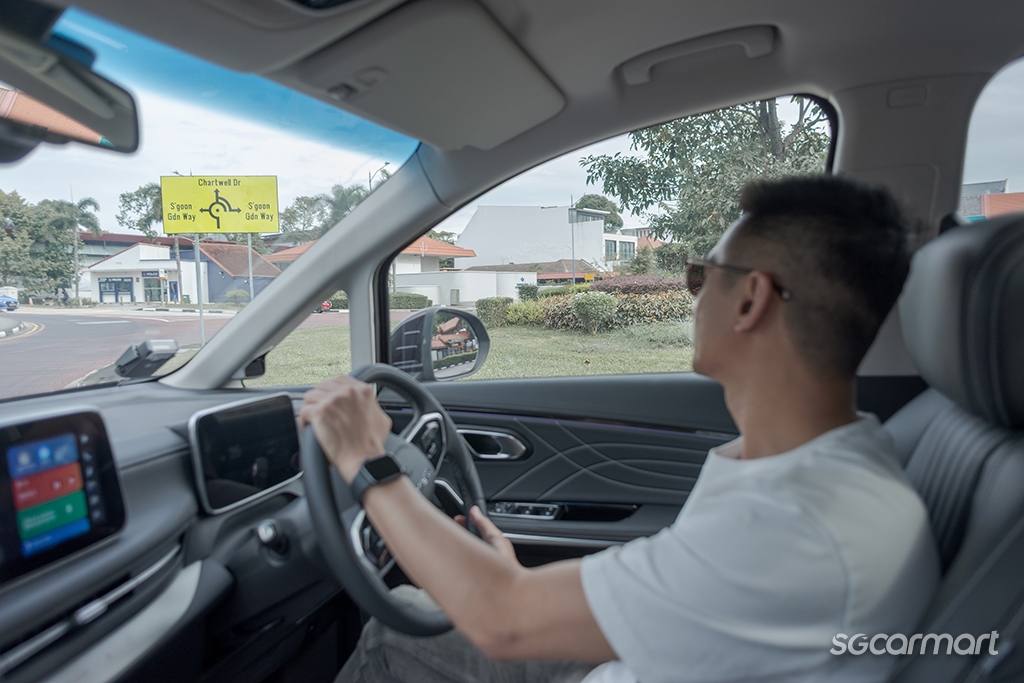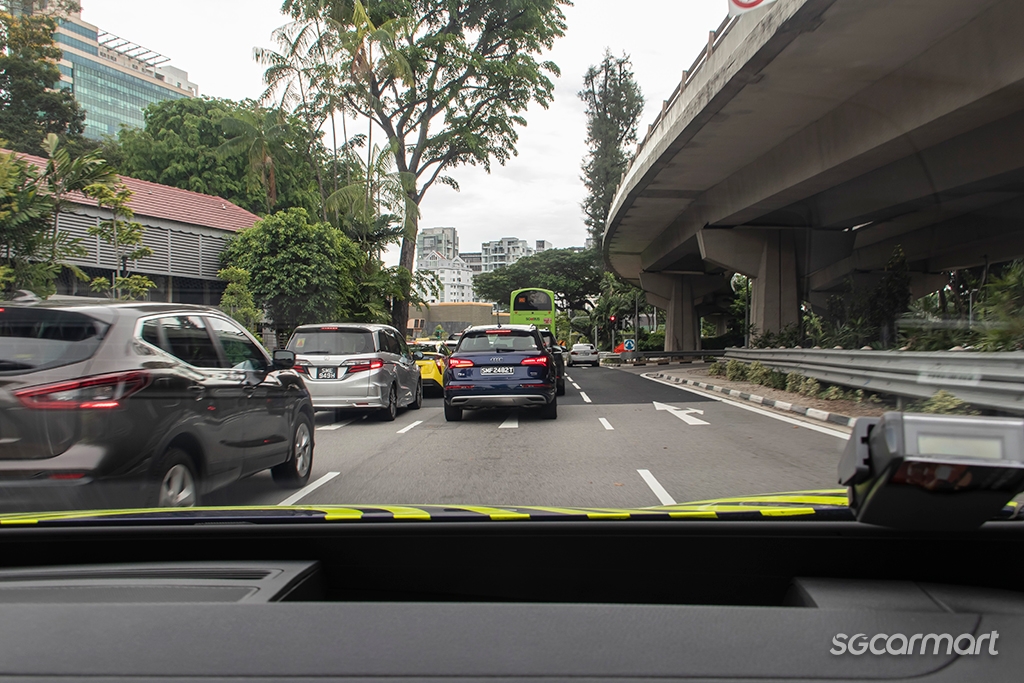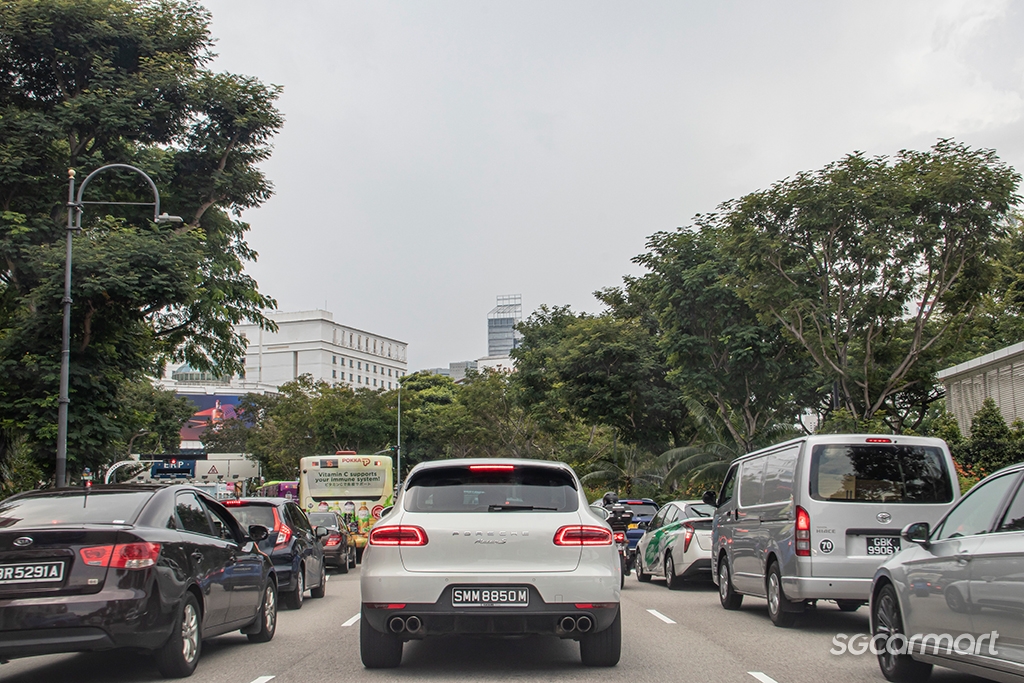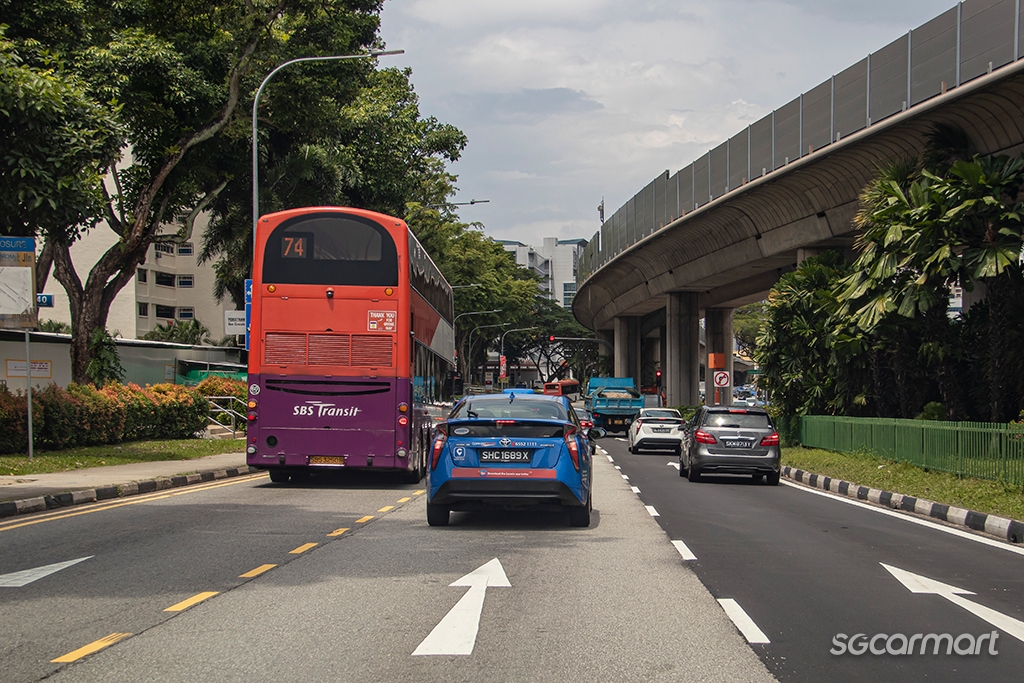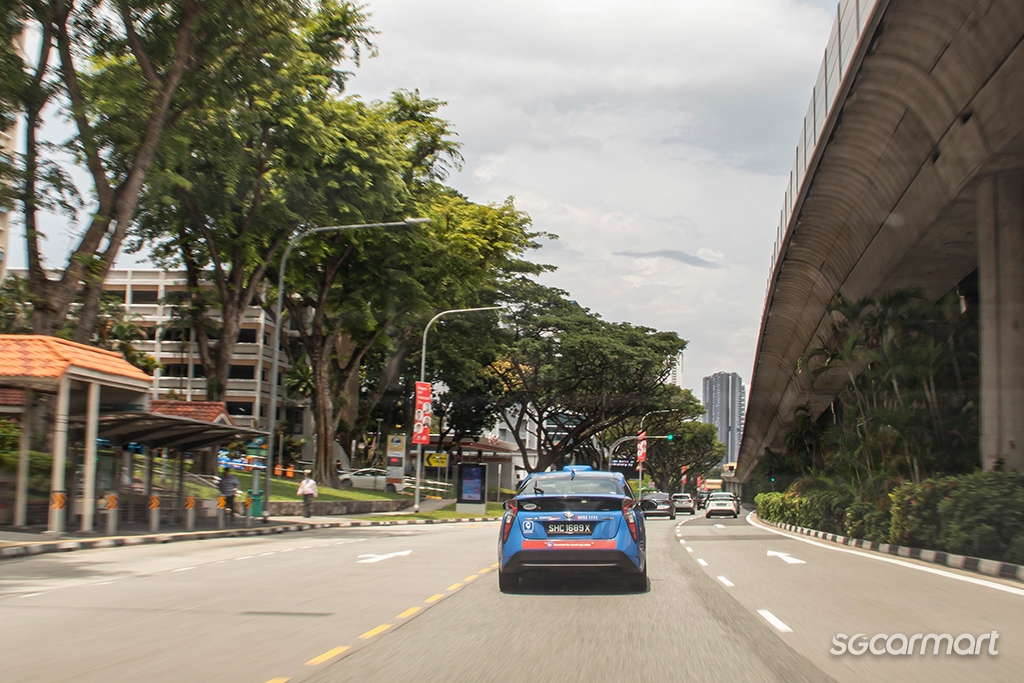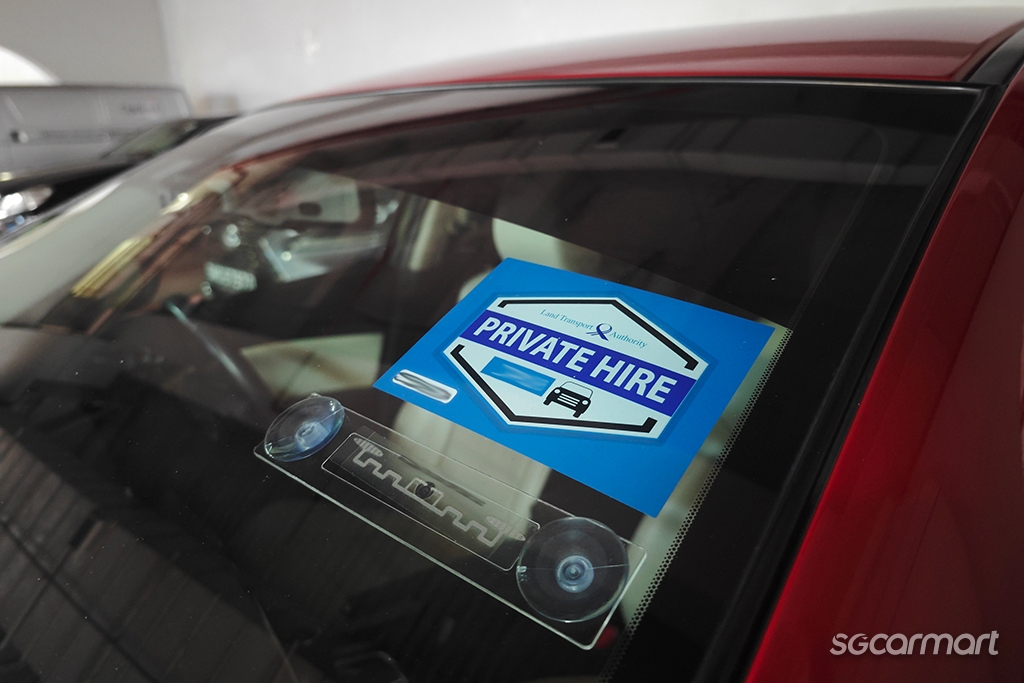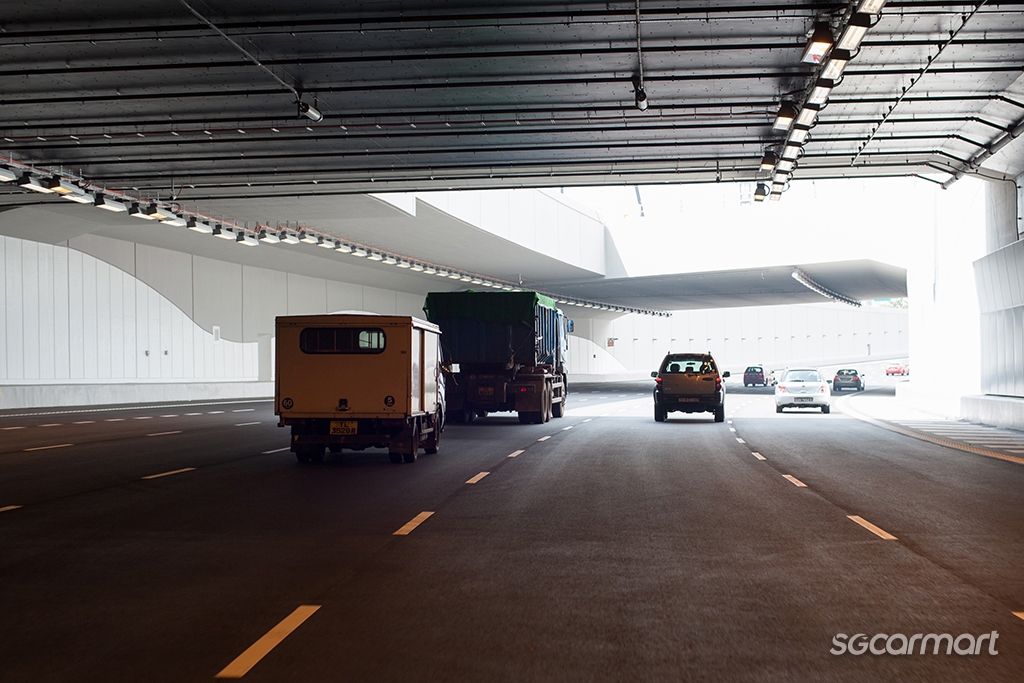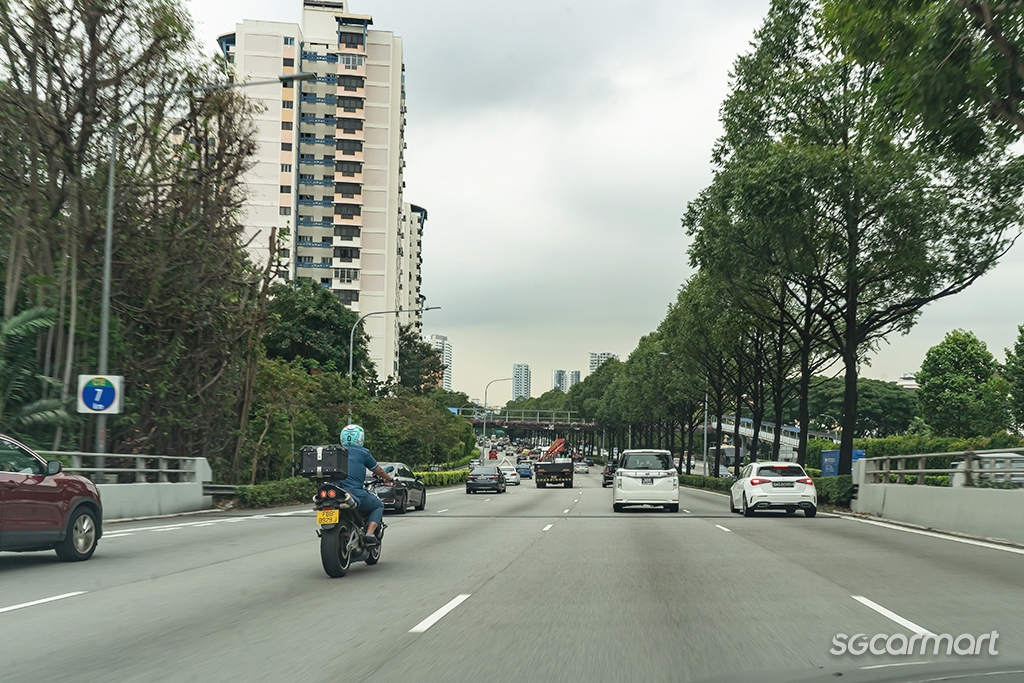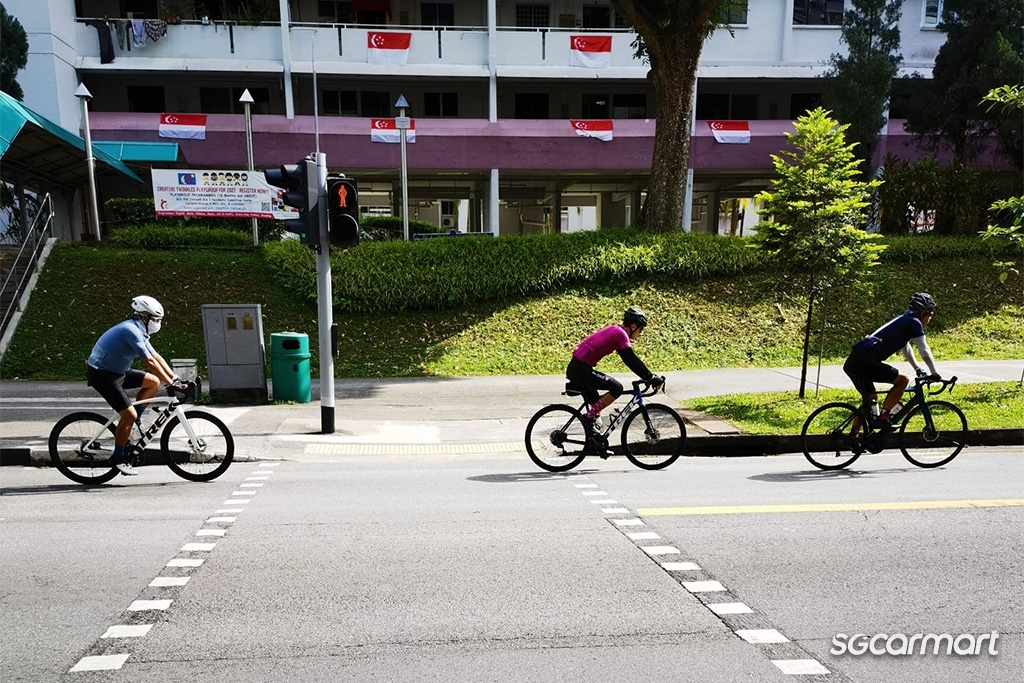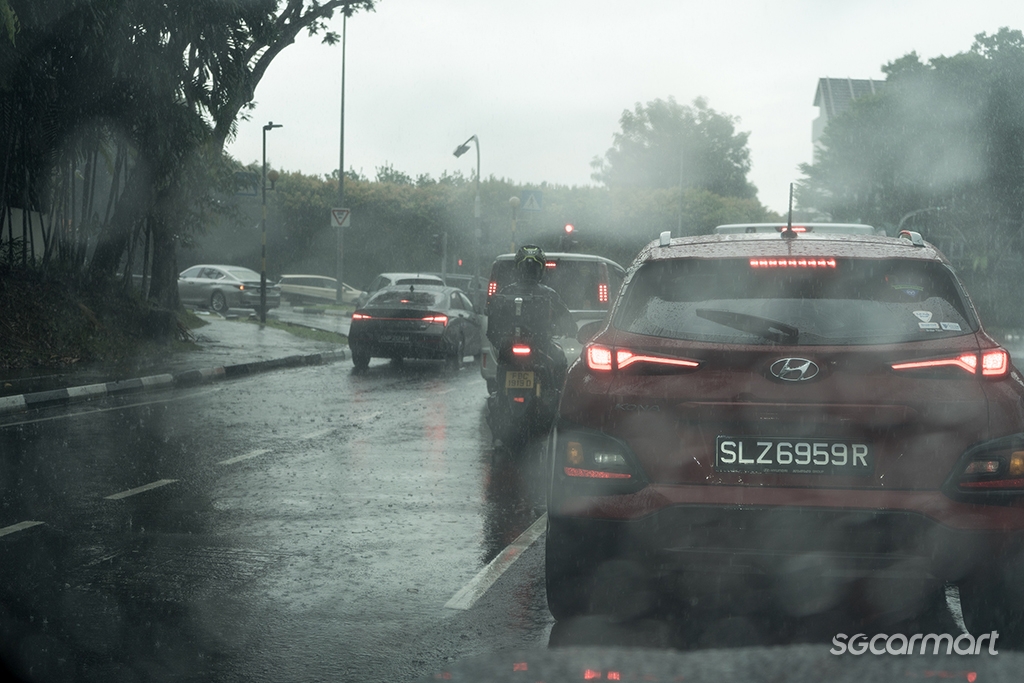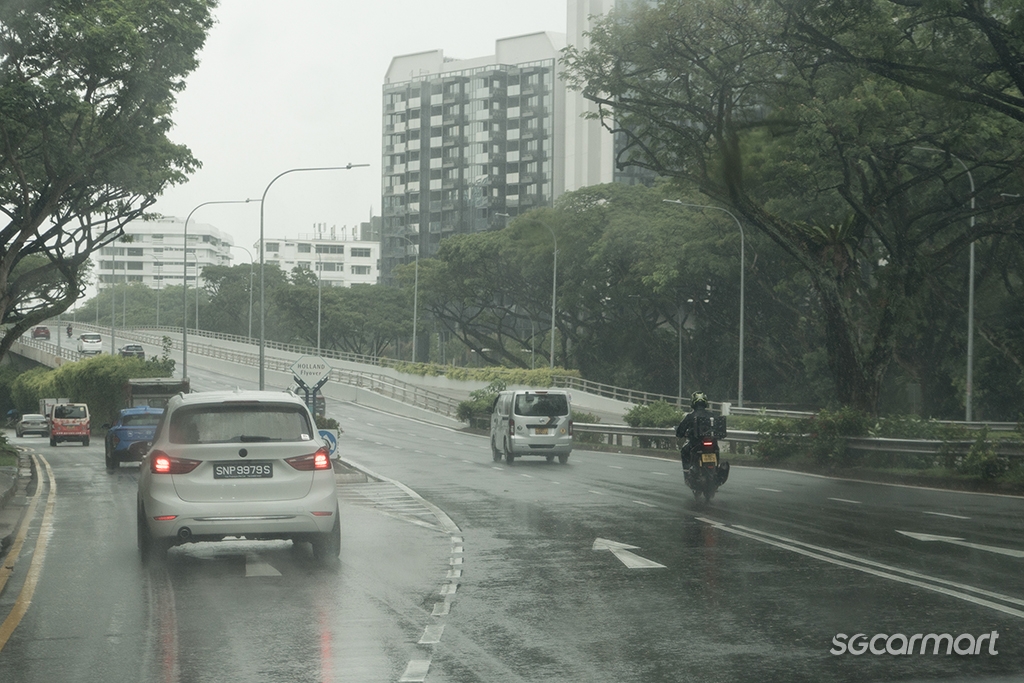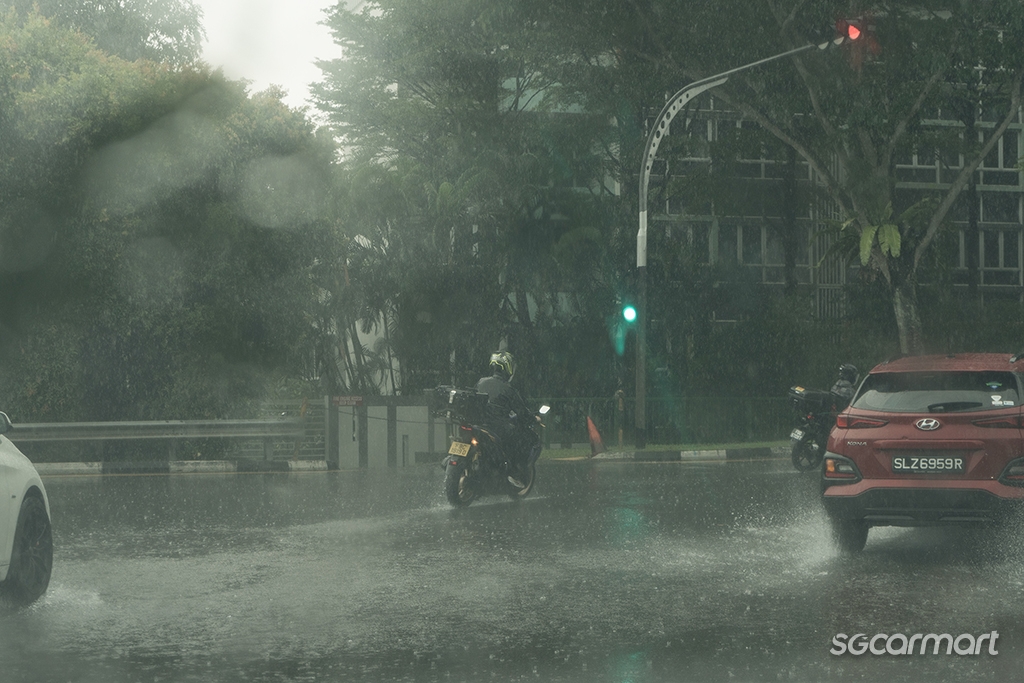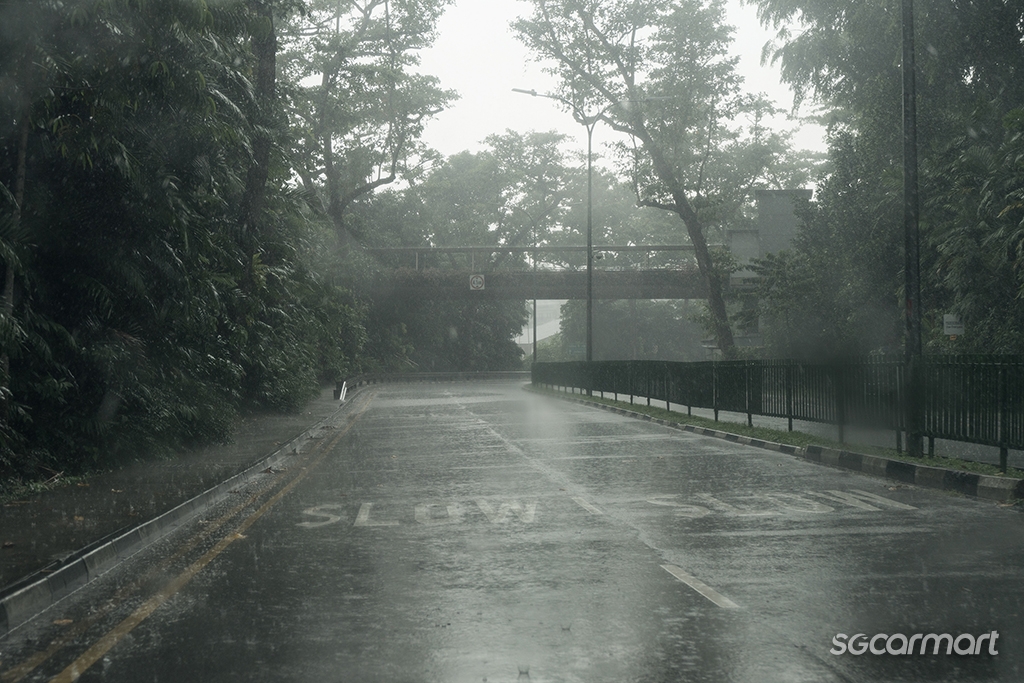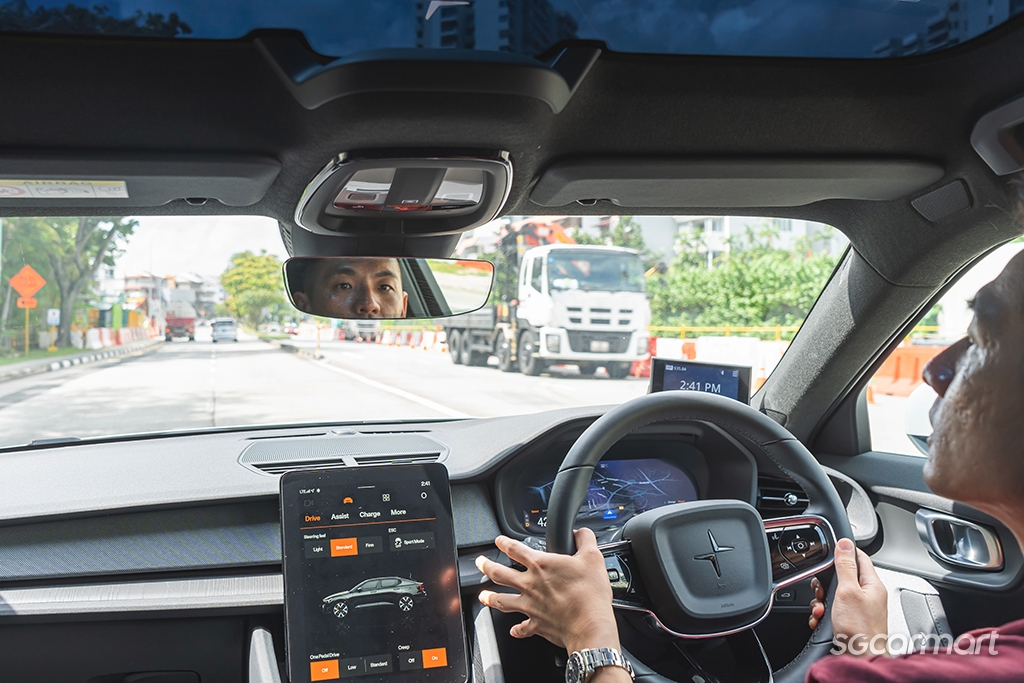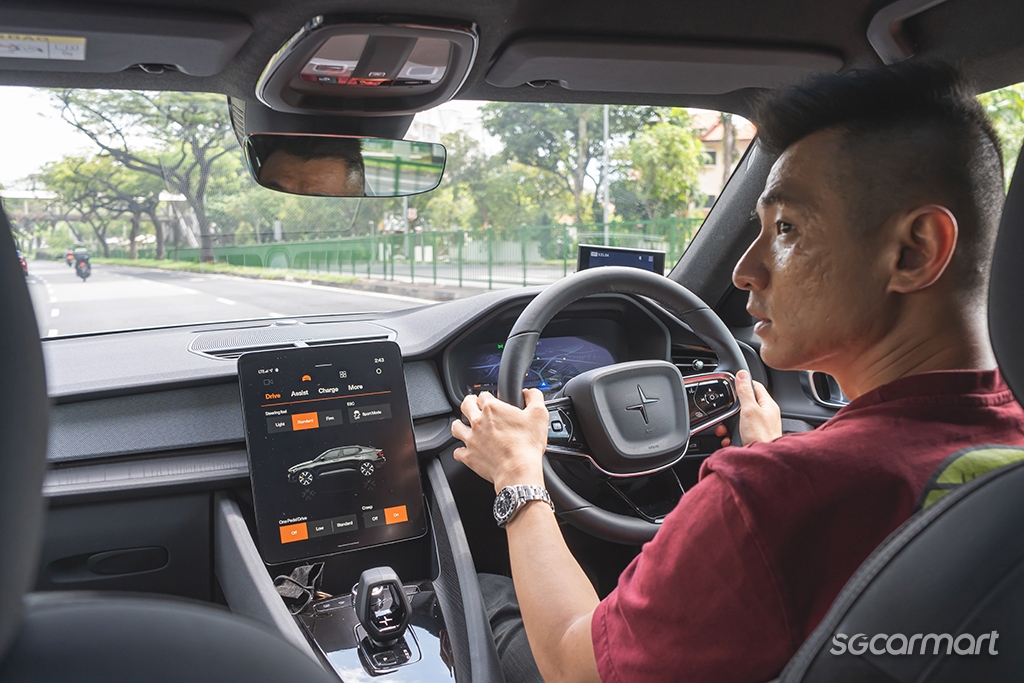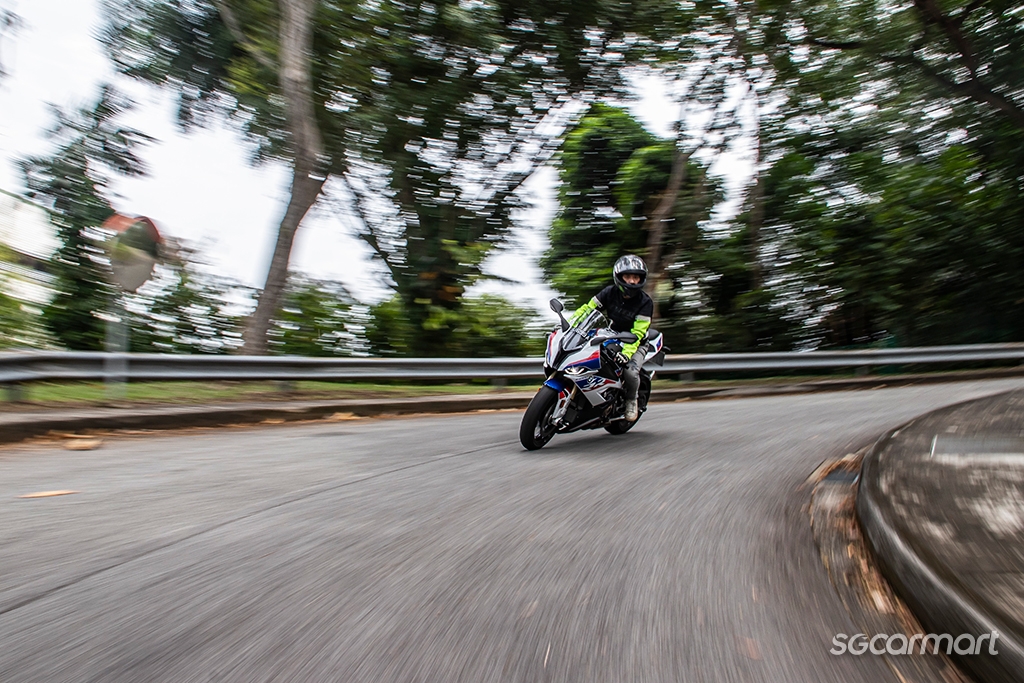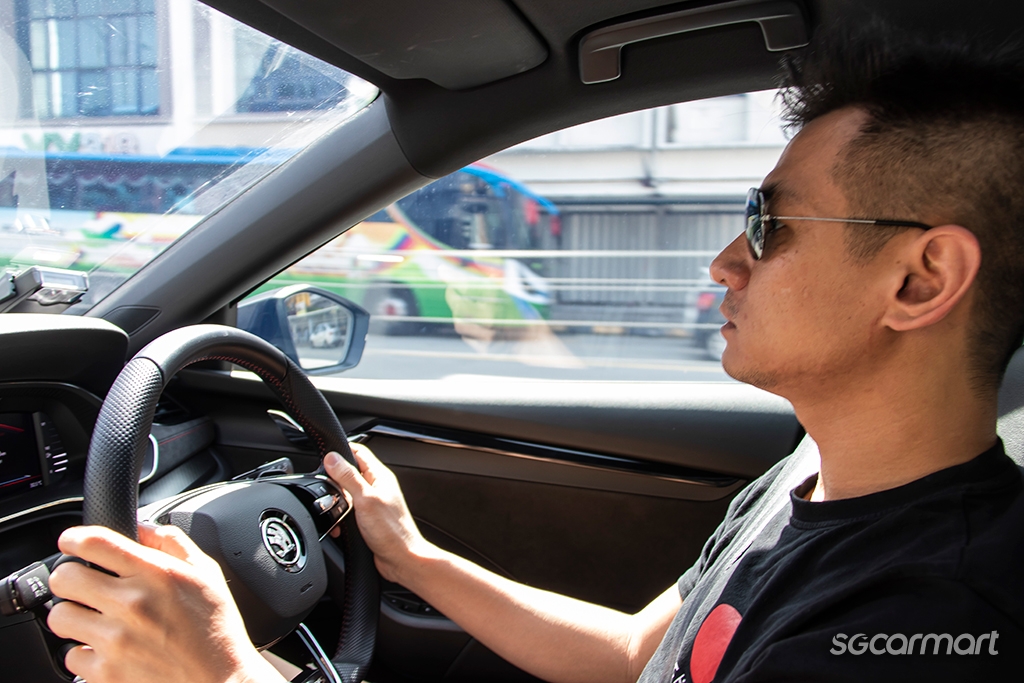6 tips for better driving habits, from a biker
05 Jun 2024|1,796 views
While my job primarily revolves around cars, my daily mode of transport is actually a motorbike. There are of course emotional reasons for it, but on a very practical level, it is the form of personal transport I'm willing to afford.
The actual benefits/drawbacks of riding a bike are another discussion and story altogether. Here, I want to draw on my experiences and highlight some ways in which riding a bike has actually made me a better driver, and can maybe help you be better, too.
By memorising routes and being more alert to road signs and landmarks, you can both have a better sense of direction, and be less reliant on navigation apps while driving
1. Knowing my way around Singapore
This perhaps does not apply to every biker, but I don't use Google Maps/Waze while riding. This is partially because my bike is not particularly conducive to a phone mount. As a result, if I'm going to somewhere unfamiliar, I actually have to memorise the route beforehand (usually by counting the number of junctions and remembering which way to turn).
As a result, I do think that it has greatly improved not just my ability to navigate, but also my general familiarity with areas. Because I'm not following audio instructions or looking at a virtual map, I'm forced to look out for landmarks and/or road signs. And that improved ability to navigate translates to driving, obviously. I do think more people could do with a better sense of direction/location.
Especially in heavier traffic, you want to take pre-emptive precaution by not just focusing on the car directly in front, but what's further up ahead as well
2. Pre-emptive precaution
Yes, riding a bike is inherently more risky than driving a car. Danger can (and must) be mitigated, and what I've learnt over the years is to be acutely aware of situations where potential danger is possible - it's about being as pre-emptive as possible.
Here's one example: It's heavy traffic, and suddenly a gap briefly opens up in one lane. There is a chance that someone is going to suddenly change lanes without signalling or checking their blind spot. As a biker, my instinct is be alert and be ready to brake (especially if I am lane splitting).
The key to this is to look far ahead - yes, the vehicle in front of you, but perhaps even more importantly the vehicles and situation further up ahead. Any situation happening there will impact the vehicle in front of you, so this allows you to react early and give yourself plenty of time and space to avoid any incidents. Don't only focus on the one vehicle ahead of you.
Unexpected/rash behaviour is something that all motorists may encounter, and knowing how to spot situations where it's possible or likely will serve all drivers well. It's better to react before something happens then to react when it happens.
3. Understanding habits
Not all vehicles (and drivers) behave the same way on the road. And, there are certain "types" of drivers that have more recognisable habits.
I am not actively calling any groups of drivers as being "bad" and am cautious about stereotyping or painting such groups with a broad stroke, but some habits are worth noting.
Taxis: Perhaps less common than before, but I'm sure everyone has experience or heard a story or a taxi rapidly changing multiple lanes and stopping abruptly to pick up a passenger.
Drivers of taxis and private-hire vehicles spend long hours on the road, which may lead to fatigue and lower concentration
Blue labels: Private-hire drivers are more predisposed to be looking at phones for navigation guidance and/or checking for jobs, so there's a chance their attention to other road users isn't always at 100%. Not to mention long hours that may lead to fatigue and lower concentration.
Delivery vehicles: Just due to the nature of their jobs, these drivers tend to be more strapped for time than others (possibly rushing), and also spend more time on the road (possibly tired). Whether it's cars, vans, lorries, even bikes, it's worth being slightly more cautious around such vehicles.
Heavy Vehicles: Heavy vehicles (including buses), just due to their overall size and length, tend to have larger blind spots. I typically try to avoid ever travelling alongside one - either hang back, or get ahead if possible.
Paying attention to the behaviour of other motorists can help you anticipate and avoid any potential incidents or close shaves
Performance cars: Less so your Ferraris and Lambos, but more 'regular' performance cars like your Ms and AMGs and Type Rs could have drivers that are a little more speed-hungry (I'm possibly guilty of this too), at least compared to a typical Altis driver. It certainly helps that these cars have notably more power on tap, too, so everything just happens a little bit faster.
Bikers: I lane split, but not particularly aggressively. There are bikers who have a higher appetite for risk, though. If I see a single head light quickly closing, I'll happily give way.
In general, the key thing I'm always on the lookout for is what I would term 'higher risk' types. Not all vehicles and motorists are equal, and it would be foolish to treat them all equally (the risk is mine to bear, after all). It helps to be able to spot these vehicles from a distance, and take mitigating action if necessary.
While driving, I extend extra grace to two-wheelers, hoping that the same courtesy will be extended to me when I am on two-wheels
4. Looking out for fellow bikers (and cyclists)
This is perhaps more unique to people who commute on two-wheels, but I think that precisely because I can empathise with their experience, I also tend to be much more alert, careful and graceful towards two-wheelers when I'm driving. I'll leave ample space for bikers to lane split, make sure to give a wide berth to cyclists (even if that requires me to eat into the next lane), and be extra cautious in heavy traffic.
And in the inverse, I am also very grateful and appreciative of drivers who afford me the same courtesy when I am on two wheels.
Riding in the rain is miserable (and sometimes unavoidable), but it also certainly teaches you how to proceed with extreme caution
5. Dealing with rain
If there's one thing riders detest, it's rain. Obviously, I would rather not ride in the rain, but sometimes the skies are erratic and unforgiving (and so are the appointments, sadly).
Especially in heavy downpours, the risk on two wheels ratchets up significantly. Visibility is notably compromised (helmets don't have windscreen wipers), and not just from the rain, but from the back spray from vehicles as well. If there's standing water on the road, I have to be even more careful about aquaplaning. And of course, throttle modulation is key - no snatching at the brakes as well.
And perhaps most relevantly, I am most cautious about other vehicles going over standing water when alongside me - the spray can sometimes be significant enough to cause some wobble.
In a car, there's no risk of getting your body wet, but some of the other cautions remain. Be patient even if traffic is slow. Slow down when going over standing water. Be light on the throttle, and even gentler on the brakes (give people behind time to react! Their vision are compromised as well). And as a general rule, just give more space to other motorists on the road, so everyone has more time to react.
Regularly checking your side and rear view mirrors gives you ample information of what's happening around you, ensuring that you can react without being surprised
6. Paying extra attention to what's around me
While driving, how often do you check your mirrors? Do you even remember what was 'taught'? (In the Basic Theory of Driving Official Handbook, it is recommended to "cultivate the habit of checking the mirrors every 5 to 10 seconds while driving along".)
I probably do it every 10 to 12 seconds, even if I "know" there's nothing new to see. Even if there's literally no other car on the road, I still regularly check my mirrors. It's become habitual because I do that on a bike all the time.
Obviously, riding leaves me more exposed than driving. Thus, having a constant awareness and understanding of my surroundings, whether through checking my mirrors or turning my head and looking around, is key to keeping myself out of trouble.
The same practice should also be applied when driving - it gives you regular information about your surroundings, and allows you to react without being surprised. Don't just check your mirrors when you want to do something, such as filtering into the next lane. Keep checking, pay constant attention, anticipate problems before they even happen.
Regardless of whether on two wheels or four, we can all benefit from practising more caution, exercising more patience, and extending more kindness on the roads
I believe that everyone should strive to be better, safer and more considerate motorists on our shared roads. Practise more caution, exercise more patience, and extend more kindness, and we can make all our daily commutes safer and better - regardless of how many wheels you are on.
While my job primarily revolves around cars, my daily mode of transport is actually a motorbike. There are of course emotional reasons for it, but on a very practical level, it is the form of personal transport I'm willing to afford.
The actual benefits/drawbacks of riding a bike are another discussion and story altogether. Here, I want to draw on my experiences and highlight some ways in which riding a bike has actually made me a better driver, and can maybe help you be better, too.
By memorising routes and being more alert to road signs and landmarks, you can both have a better sense of direction, and be less reliant on navigation apps while driving
1. Knowing my way around Singapore
This perhaps does not apply to every biker, but I don't use Google Maps/Waze while riding. This is partially because my bike is not particularly conducive to a phone mount. As a result, if I'm going to somewhere unfamiliar, I actually have to memorise the route beforehand (usually by counting the number of junctions and remembering which way to turn).
As a result, I do think that it has greatly improved not just my ability to navigate, but also my general familiarity with areas. Because I'm not following audio instructions or looking at a virtual map, I'm forced to look out for landmarks and/or road signs. And that improved ability to navigate translates to driving, obviously. I do think more people could do with a better sense of direction/location.
Especially in heavier traffic, you want to take pre-emptive precaution by not just focusing on the car directly in front, but what's further up ahead as well
2. Pre-emptive precaution
Yes, riding a bike is inherently more risky than driving a car. Danger can (and must) be mitigated, and what I've learnt over the years is to be acutely aware of situations where potential danger is possible - it's about being as pre-emptive as possible.
Here's one example: It's heavy traffic, and suddenly a gap briefly opens up in one lane. There is a chance that someone is going to suddenly change lanes without signalling or checking their blind spot. As a biker, my instinct is be alert and be ready to brake (especially if I am lane splitting).
The key to this is to look far ahead - yes, the vehicle in front of you, but perhaps even more importantly the vehicles and situation further up ahead. Any situation happening there will impact the vehicle in front of you, so this allows you to react early and give yourself plenty of time and space to avoid any incidents. Don't only focus on the one vehicle ahead of you.
Unexpected/rash behaviour is something that all motorists may encounter, and knowing how to spot situations where it's possible or likely will serve all drivers well. It's better to react before something happens then to react when it happens.
3. Understanding habits
Not all vehicles (and drivers) behave the same way on the road. And, there are certain "types" of drivers that have more recognisable habits.
I am not actively calling any groups of drivers as being "bad" and am cautious about stereotyping or painting such groups with a broad stroke, but some habits are worth noting.
Taxis: Perhaps less common than before, but I'm sure everyone has experience or heard a story or a taxi rapidly changing multiple lanes and stopping abruptly to pick up a passenger.
Drivers of taxis and private-hire vehicles spend long hours on the road, which may lead to fatigue and lower concentration
Blue labels: Private-hire drivers are more predisposed to be looking at phones for navigation guidance and/or checking for jobs, so there's a chance their attention to other road users isn't always at 100%. Not to mention long hours that may lead to fatigue and lower concentration.
Delivery vehicles: Just due to the nature of their jobs, these drivers tend to be more strapped for time than others (possibly rushing), and also spend more time on the road (possibly tired). Whether it's cars, vans, lorries, even bikes, it's worth being slightly more cautious around such vehicles.
Heavy Vehicles: Heavy vehicles (including buses), just due to their overall size and length, tend to have larger blind spots. I typically try to avoid ever travelling alongside one - either hang back, or get ahead if possible.
Paying attention to the behaviour of other motorists can help you anticipate and avoid any potential incidents or close shaves
Performance cars: Less so your Ferraris and Lambos, but more 'regular' performance cars like your Ms and AMGs and Type Rs could have drivers that are a little more speed-hungry (I'm possibly guilty of this too), at least compared to a typical Altis driver. It certainly helps that these cars have notably more power on tap, too, so everything just happens a little bit faster.
Bikers: I lane split, but not particularly aggressively. There are bikers who have a higher appetite for risk, though. If I see a single head light quickly closing, I'll happily give way.
In general, the key thing I'm always on the lookout for is what I would term 'higher risk' types. Not all vehicles and motorists are equal, and it would be foolish to treat them all equally (the risk is mine to bear, after all). It helps to be able to spot these vehicles from a distance, and take mitigating action if necessary.
While driving, I extend extra grace to two-wheelers, hoping that the same courtesy will be extended to me when I am on two-wheels
4. Looking out for fellow bikers (and cyclists)
This is perhaps more unique to people who commute on two-wheels, but I think that precisely because I can empathise with their experience, I also tend to be much more alert, careful and graceful towards two-wheelers when I'm driving. I'll leave ample space for bikers to lane split, make sure to give a wide berth to cyclists (even if that requires me to eat into the next lane), and be extra cautious in heavy traffic.
And in the inverse, I am also very grateful and appreciative of drivers who afford me the same courtesy when I am on two wheels.
Riding in the rain is miserable (and sometimes unavoidable), but it also certainly teaches you how to proceed with extreme caution
5. Dealing with rain
If there's one thing riders detest, it's rain. Obviously, I would rather not ride in the rain, but sometimes the skies are erratic and unforgiving (and so are the appointments, sadly).
Especially in heavy downpours, the risk on two wheels ratchets up significantly. Visibility is notably compromised (helmets don't have windscreen wipers), and not just from the rain, but from the back spray from vehicles as well. If there's standing water on the road, I have to be even more careful about aquaplaning. And of course, throttle modulation is key - no snatching at the brakes as well.
And perhaps most relevantly, I am most cautious about other vehicles going over standing water when alongside me - the spray can sometimes be significant enough to cause some wobble.
In a car, there's no risk of getting your body wet, but some of the other cautions remain. Be patient even if traffic is slow. Slow down when going over standing water. Be light on the throttle, and even gentler on the brakes (give people behind time to react! Their vision are compromised as well). And as a general rule, just give more space to other motorists on the road, so everyone has more time to react.
Regularly checking your side and rear view mirrors gives you ample information of what's happening around you, ensuring that you can react without being surprised
6. Paying extra attention to what's around me
While driving, how often do you check your mirrors? Do you even remember what was 'taught'? (In the Basic Theory of Driving Official Handbook, it is recommended to "cultivate the habit of checking the mirrors every 5 to 10 seconds while driving along".)
I probably do it every 10 to 12 seconds, even if I "know" there's nothing new to see. Even if there's literally no other car on the road, I still regularly check my mirrors. It's become habitual because I do that on a bike all the time.
Obviously, riding leaves me more exposed than driving. Thus, having a constant awareness and understanding of my surroundings, whether through checking my mirrors or turning my head and looking around, is key to keeping myself out of trouble.
The same practice should also be applied when driving - it gives you regular information about your surroundings, and allows you to react without being surprised. Don't just check your mirrors when you want to do something, such as filtering into the next lane. Keep checking, pay constant attention, anticipate problems before they even happen.
Regardless of whether on two wheels or four, we can all benefit from practising more caution, exercising more patience, and extending more kindness on the roads
I believe that everyone should strive to be better, safer and more considerate motorists on our shared roads. Practise more caution, exercise more patience, and extend more kindness, and we can make all our daily commutes safer and better - regardless of how many wheels you are on.























